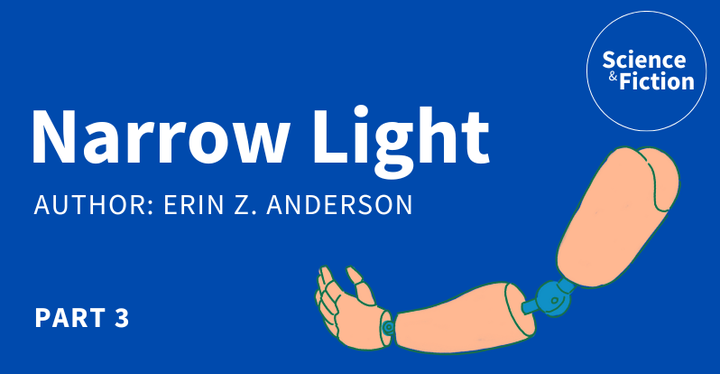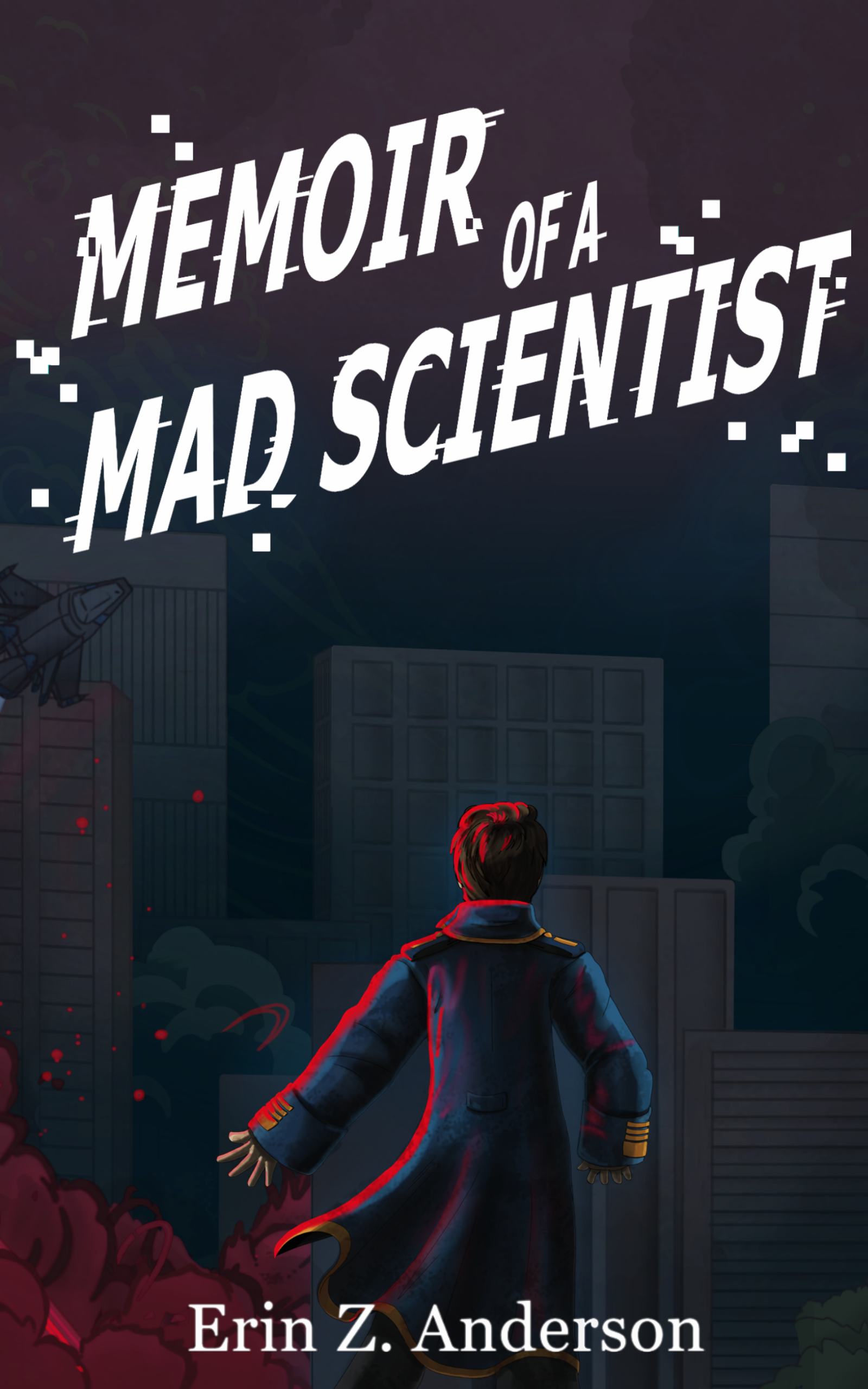
A scientist tries to escape a war zone as his own invention comes to call.
Content warnings
Battle
The short story
Lost in thought, I tripped over a chunk of concrete, nearly spoiling my fearless leader mystique entirely. Back in real life, I adjusted the coat’s high collar to cover the misstep before I risked a glance over my shoulder at the rest of the group. Behind me, the mismatched gang of civilians and soldiers picked their way over the rubble in an awkward march, bobbing up and down as they walked over chunks of the city. The soldiers kept their guns raised and eyes focused on the smoke around us, somehow watching the perimeter and their step at the same time as they escorted our escape. I caught sight of Kovac, who had stretched my small brown coat over his shoulders as far as it would go. Kovac saw me looking and gave a thumbs up. I managed a smile in return, glad that at least someone appreciated what I was trying to do.
Even with the blasts of destruction around us, we moved at a snail’s pace. The city had turned gray with ash, the air choked on smoke and dust until it was almost impossible to see farther than an arm’s length away. I saw a smashed police sentinel, its trailing tentacles spread out behind it, broken and throwing sparks as it went. Another blast shook the ground, and we clustered together like frightened sheep looking for comfort in numbers.
“Keep moving!” My voice rang over the buzzing aftershock. “Come on!” With shaking steps, we carried on for another few feet when the distant drone of engines revved from a rumble to deep chest rattling roar.
“Look!” Jabbing a finger skyward, one soldier shouted at the clouds.
Everyone followed his gaze where the clouds glowed with light as the first military ship swept over New Core. It was the biggest ship I had ever seen. In fact, I was pretty sure that ships that size were only meant for use in space. The great egg-shaped construction was bigger than my building; the huge, smooth hull dwarfed the skyline as its bloated gray belly drooped beneath the clouds, dropping below the cloud cover like a whale breaching the surface of a black ocean. This was why they were called danger days.
With the lazy grace of a meandering leviathan, the massive Coalition battleship glided over the city while dozens of nimble destroyers flanked like a circling school of pilot fish around a shark. Searchlights from the flagship illuminated the capital, the massive beams cutting easily through the smog to probe between the broken buildings. At some unheard cue, one of the destroyers from the squadron broke off from the battleship, shedding handfuls of small one-man interceptors, which in turn plummeted to earth, dive-bombing prey caught in the searchlights.
“Keep going!” Captain Zima called from the back. “We need to get out of this.”
But I was transfixed. The knot in my chest ratcheted tighter as I stared at the new AVL arrays hanging from the destroyer’s belly. “No. Oh, union, please. No!” With the interceptors whizzing back to safety, the array on the destroyer glowed to life. For a second, everything seemed to freeze in place, framing the image in perfectly horrible detail, when at last the lasers finally fired. Oscillating beyond the limits of human sight, the invisible beam might not have existed at all if it weren’t for the white-hot line of fire it ripped through the buildings like a dragon belching fire on the city below. I didn’t need to see the massive beam of unforgiving photons as it boiled the air to plasma and ripped at the earth with the intensity of a volcanic eruption, throwing up chunks of stone and pavement as it swept through the rebel lines as easily as a scalpel through water.
“Go!” A hand pushed at me, but I was rooted to the spot, jaw hanging open as my work swept through the rebels with ease, explosions rocking the world as if the pavement were rigged to ignite under fire. I couldn’t breathe. That was the AVL. There was no way it could be anything else. My mouth felt full of ash as I remembered the innocent wires and motors laid out in the lab. I had helped build that! Me and my team — we had made it.
Mouth agape, I watched in horror while around me, people began to cheer.
This story was originally written in English.
The paper
Scheers, L., Vissers, G., Piscaer, P., Van Binsbergen, S., Nieuwenhuizen, R., Overzier, R., … & Schleijpen, R. (2023). Numerical analysis of propagation conditions in which conventional adaptive optics can improve laser-directed energy weapons beam shaping. In High Power Lasers: Technology and Systems, Platforms, Effects VI, PC1273902. SPIE. https://doi.org/10.1117/12.2683965
Connection between story and paper
This paper investigates the use of adaptive optics (AO) to improve lasers for use as weapons. In this study the authors looked into how different conditions could effect the laser beams’ “aberated field” and how to improve it. In the story we see a finished product, a laser that can tear through a city building like butter, however the science behind creating such a weapon involves a lot of factors that could impact the beam. Factors like spot size, Strehl ratio and power-ratio-in-the-bucket (PRIB) which are explored in this study. By knowing when to use systems like the AO, a laser system can operate better in turbulent conditions - conditions like a sci-fi rebel uprising.
The author
This story is an excerpt from the book “Memoir of a Mad Scientist” by Erin Z. Anderson. Here is a short description: Dr. Jarian Voss has been a member of the Coalition’s interplanetary empire his whole life. So when he discovers the Coalition’s true goals, what will he do to keep himself and his team ahead of the laser fire? Buy it here: https://a.co/d/1wAnJXr.
